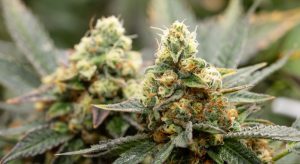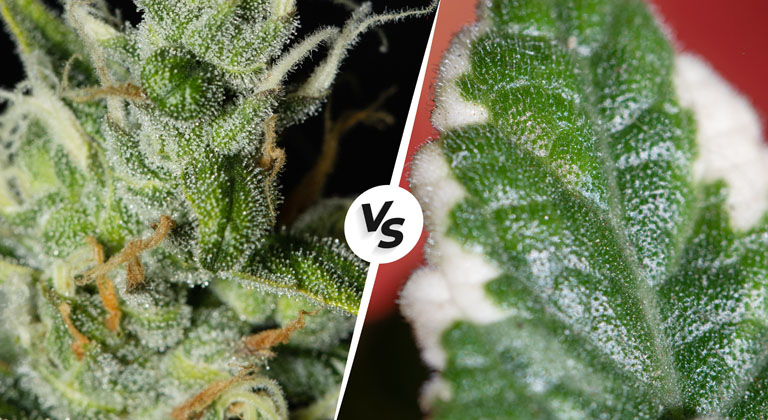In this post we’re going to talk about some interesting facts about animals and terpenes, specifically koalas and squirrels and how their diet is conditioned, in part, by terpenes.
Animals and Terpenes: Squirrels and Koalas
Although plants can’t escape from predators by running away, they can defend themselves chemically; this is why plants produce chemical compounds that act as a repellent for certain animals and insects, protecting them from predators.
Among these chemical compounds produced by plants, you can find many terpenes which are naturally present in many plants (and as we’ve said on other occasions, they’re also found in cannabis plants).
Let’s have a look at some of the most interesting terpene and animal connections.
Squirrels and Pinene
From Fall to Spring, American squirrels have a diet that consists mostly of the inner bark on small pine branches. According to an extensive study done over a span of more than 50 years, apparently Squirrels don’t just go for any old pine tree; they’re quite selective when it comes to choosing their “feeding” tree.
By just looking at them, pine trees are incredibly similar to one another, but according to squirrels’ intelligent selection process, only some can be used as food.
Ethologists noticed that the branches with the lowest monoterpene content (alpha-pinene, in particular) were chosen for food by squirrels.
This would seem to indicate that alpha-pinene acts as a repellent for these animals, which prefer to consume pine trees low in this terpene. Alpha-pinene produces an aroma similar to pine, woody with hints of earth and eucalyptus.
This terpene is incredibly common in coniferous plants such as Pine trees, rosemary, eucalyptus, salvia and citric fruits. It’s also found in cannabis flowers in high amounts, which is why it’s considered one of the main terpenes in cannabis.

Some cannabis strains rich in alpha–Pinene are:
A complex selection process beyond alpha-pinene
However, it’s true that alpha-pinene is not the only reasoning behind the squirrels selective process; it was also found that it depends on the total amount of mono-terpenes, which is to say, the amount of Myrcene, Sabinene, Terpinolene and others.
It was also found that this selection may also be related to recognizing trees or plants that squirrels shouldn’t feed on (Zhang and States, 1981). Depending on the geographical location, pine trees may have different dominant monoterpenes, and it seems that squirrels are capable of adapting to pine trees depending on where they’re born.
Koalas and Cineol (Eucalyptol)
Koalas are marsupials found in Australia and are currently catalogued as an endangered species. These ancestral animals are in danger of becoming extinct due to urbanization, losing their natural habitat and climate change.
Koalas are the only mammals that have eucalyptus seeds as a staple in their diet; they’re toxic for most herbivorous mammals, as they contain high amounts of certain compounds.
However, this animal has developed an amazing tolerance for this plant, and it seems that scientists have been able to find out why: koalas have a high amount of specific metabolic enzymes in their livers, which may be the key to understanding their capacity for digesting eucalyptus leaves without being affected, something that no other species can do.
A Particular Diet
A koala’s diet would be fatal for other animals, although many strains of eucalyptus can also be toxic for these marsupials; out of about 600 strains of eucalyptus plants, it turns out that koalas can only feed on about 50.
It’s been proven that koalas prefer to eat leaves from strains that are most common in the area they were bred in, which may be because the amount of monoterpenes is similar so what they’re used to finding.
Eucalyptus leaves are rich in terpenes such as Cineol (or Eucalyptus), a terpene which produces a minty, fresh and slightly spicy aroma; it can also be found in other plants such as laurel, tea tree, mugwort and basil, among others.

Cineol can also be found in the aromatic composition of certain cannabis strains, although usually in lower quantities than other terpenes such as caryophyllene or linalool. It can be found in strains such as:
As you can see, terpenes are compounds present in nature that, in the right proportions can attract animals and be beneficial, and in some cases can even act as a repellent.
What do you think? Nature hides a lot of secrets, right? Leave a comment below and let us know what you think.
Until next time!
Cali Terpenes
Sources:
“Relaciones Químicas entre Organismos Aspectos Básicos y Perspectivas de su Aplicación” (A. Luisa Anaya – F. Espinosa García – R. Cruz Ortega, Plaza Valdes Editores, 2001).
“Nature Genetics” (Johnson et al., 2018).











